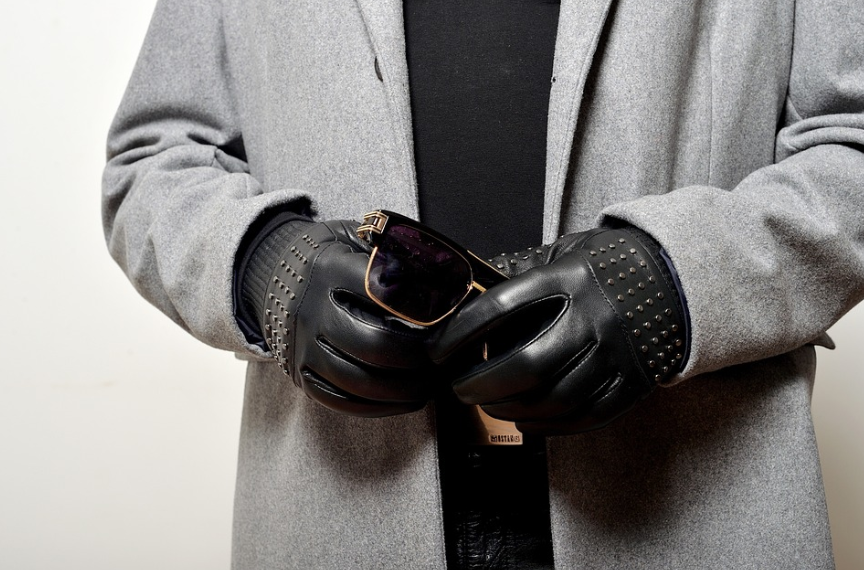Leather gloves are not only functional but also stylish, offering protection and elegance in various settings. Over time, however, their color may fade or you might simply want to change their appearance to suit your evolving style.
Dyeing leather gloves is a fantastic way to refresh or customize them, giving them a new lease on life. This guide will walk you through everything you need to know about leather glove dyeing, from gathering materials to troubleshooting common issues.
Introduction to dying Leather Gloves
Leather has long been cherished for its durability, flexibility, and timeless appeal. It's a material used in everything from high-fashion accessories to sturdy work gloves, appreciated for its ability to withstand wear while looking sophisticated. However, as with any material, leather can show signs of aging, or you may simply wish to change its color to keep up with fashion trends.
Benefits of Dyeing Leather Gloves Yourself
Dyeing leather gloves yourself offers numerous benefits. Not only does it allow for complete customization, enabling you to create custom glove colors that perfectly match your personal style, but it also extends the life of your gloves. Whether you want to revive an old pair of gloves or simply add a unique touch to your accessory collection, DIY dyeing is both cost-effective and creatively fulfilling.
Materials Needed
Before diving into the dyeing process, it's essential to gather all the necessary materials. Having the right tools and products ensures a smooth, successful experience.
List of Essential Materials
- Leather Dye: Choose a dye that is specifically formulated for leather. These dyes penetrate the leather, ensuring long-lasting color.
- Leather Deglazer: This product helps remove the existing finish on the gloves, creating a clean surface for the dye to adhere to.
- Applicators: Depending on the method you prefer, you'll need brushes, sponges, or spray bottles for applying the dye.
- Protective Gear: Gloves and a mask are recommended to protect your skin and lungs from the chemicals used during the dyeing process.
- Soft Cloths: Useful for wiping off excess dye and buffing the leather.
- Leather Conditioner: This is essential for post-dyeing care to keep the leather supple and protected.
Explanation of Different Types of Dyes
Understanding the different types of leather dyes is crucial to selecting the right one for your gloves:
- Water-Based Dyes: These are eco-friendly and have minimal odor. They’re excellent for achieving an even color, though they may take longer to dry. Ideal for those who prioritize environmental impact and prefer a subtle finish.
- Alcohol-Based Dyes: Known for their fast drying time, alcohol-based dyes penetrate the leather quickly. However, they can make the leather stiffer and may require additional conditioning afterward. They’re best for those who need quick results and are experienced with dyeing.
- Oil-Based Dyes: These dyes penetrate deeply and provide a rich, even color. They take longer to dry but maintain the leather’s natural softness. Perfect for achieving durable, vibrant colors with a more natural look.
Preparing Your Gloves
Proper preparation is key to a successful dye job. Skipping this step can result in uneven color and poor dye adherence, so take your time with the preparation.
Detailed Steps to Prepare Leather Gloves for Dyeing
- Clean the Gloves: Start by cleaning your gloves to remove any dirt, oils, or residues. Use a damp cloth and a small amount of mild soap, wiping the gloves gently. Avoid soaking the leather; instead, just remove surface grime.
- Deglaze the Leather: After cleaning, apply a leather deglazer to strip off any existing finishes or coatings. This step is crucial as it ensures the dye can penetrate the leather evenly. Apply the deglazer with a clean cloth in circular motions, covering the entire surface.
- Dry the Gloves: Allow the gloves to air dry completely before proceeding to the dyeing process. This ensures that the leather is in the best condition to absorb the dye.
Dye Application Techniques
Applying dye to leather gloves requires careful attention to detail to achieve a smooth, even finish. Whether you’re aiming for a solid color or a custom look, these techniques will help you get there.
Step-by-Step Instructions on Applying Dye
- Choose Your Applicator: Depending on the look you want, select an applicator. Brushes offer precision, sponges provide an even coat, and spray bottles allow for quick application over large areas.
- First Coat Application: Begin by applying the first coat of dye using your chosen applicator. For a uniform finish, apply the dye in circular motions, ensuring even coverage. If you’re using a brush, apply the dye in long, even strokes.
- Drying Between Coats: Allow the first coat to dry completely. This can take anywhere from 30 minutes to several hours, depending on the dye type and environmental conditions.
- Apply Additional Coats: Apply additional coats as needed to achieve the desired color depth. For best results, change the direction of your application with each coat (e.g., vertical for the first coat, diagonal for the second).
- Final Touches: Once you’ve reached the desired color, give the gloves one final buff with a clean cloth to ensure even distribution of the dye.
Tips for Masking Areas to Avoid Unwanted Dye Application
If you want to maintain some parts of the gloves in their original color or create a multi-colored design, masking is essential. Use painter’s tape or masking tape to cover areas that you don’t want to dye. Ensure that the tape is pressed down firmly to prevent dye from seeping underneath. This technique is especially useful for accessory customization, allowing you to create unique patterns or two-tone gloves.
Setting the Dye
Setting the dye properly ensures that the color lasts and remains vibrant over time. Improper setting can lead to fading, uneven color, or even damage to the leather.
Techniques to Ensure the Dye Sets Properly
- Heat Setting: For certain dyes, especially alcohol-based ones, applying heat can help set the dye. Use a hairdryer on a low setting or gently wave a heat gun over the surface to help the dye bond with the leather. Be cautious not to overheat the leather, as this can cause it to dry out or crack.
- Natural Drying: For oil-based and water-based dyes, it’s best to allow the gloves to dry naturally. Place them in a well-ventilated area away from direct sunlight. This slow drying process helps the dye to penetrate deeply and set evenly.
Importance of Multiple Thin Coats
Applying multiple thin coats rather than one thick coat helps prevent streaks and ensures an even color. Each coat should be fully dry before applying the next. This method not only gives a more professional finish but also reduces the risk of the dye cracking or peeling over time.
Post-Dyeing Care
After dyeing, proper care is essential to maintain the gloves' new color and keep the leather soft and supple.
Guidance on Conditioning and Sealing the Dyed Leather
- Condition the Leather: Once the dye is completely dry, apply a leather conditioner. Conditioning restores moisture to the leather that may have been lost during the dyeing process. Use a soft cloth to rub the conditioner into the leather in circular motions, ensuring even coverage.
- Seal the Color: To protect the newly dyed color, apply a leather sealer. This step is particularly important for gloves that will be exposed to moisture or heavy use. The sealer helps prevent the color from fading or rubbing off. Apply it with a sponge or cloth, following the manufacturer’s instructions.
Recommended Products for Conditioning and Sealing
- Leather Conditioner: Choose a high-quality conditioner that’s compatible with the type of dye used. Mink oil or specialized leather conditioners are excellent options.
- Leather Sealer: Look for a sealer that offers protection without altering the finish of the dye. Products that provide UV protection are ideal for gloves that will be worn outdoors.
Troubleshooting Common Issues
Even with careful preparation and application, issues can sometimes arise during the dyeing process. Knowing how to troubleshoot these problems can save your project.
Solutions for Common Dyeing Mistakes
- Blotchy Results: If the color appears blotchy, it may be due to uneven dye application or insufficient preparation. To fix this, lightly sand the surface with fine-grit sandpaper to even out the color, then apply another thin coat of dye.
- Uneven Color: Uneven color can result from applying the dye too thickly or not allowing coats to dry properly. If this happens, you can try applying a diluted layer of dye to even out the tone, or use a dye remover to start over.
- Stiffness Post-Dyeing: If the leather feels stiff after dyeing, it may be due to the dye or not conditioning the leather properly. Applying a generous amount of conditioner and working it into the leather can help restore softness.
Dyeing leather gloves is an art that, when done correctly, can transform an old or plain pair of gloves into something truly unique. The process allows for endless customization, from subtle color changes to bold, custom glove colors that stand out. By following the steps outlined in this guide, you can achieve professional results at home, breathing new life into your leather accessories.
Remember, while dyeing leather gloves requires patience and attention to detail, the rewards are well worth the effort. Not only do you get to personalize your accessories, but you also gain the satisfaction of creating something uniquely yours. For high-quality leather dyes, conditioners, and sealers, you can explore the options available at Angelus Direct.
FAQs
1. How long does the dye on leather gloves last?
The longevity of the dye on leather gloves largely depends on the quality of the dye used, how well it was applied, and the care the gloves receive post-dyeing. High-quality dyes, when properly applied and followed by regular conditioning, can last for years without significant fading. However, leather is a natural material that can be affected by exposure to sunlight, moisture, and regular wear, so periodic touch-ups may be necessary to maintain the color.
2. Can I dye leather gloves a lighter color?
Dyeing leather gloves a lighter color is more challenging than darkening them. To achieve a lighter color, you would need to first remove as much of the original color as possible, which may involve using a leather deglazer or even bleach, depending on the leather type. Afterward, applying a white base coat before your desired color can help achieve a lighter shade. However, it’s generally easier and more successful to dye leather darker rather than lighter.
3. What type of dye should I use for my leather gloves?
The type of dye you should use depends on the specific leather and your desired results:
- Water-Based Dyes: Best for those concerned with environmental impact and odor, suitable for achieving an even finish.
- Alcohol-Based Dyes: Ideal for quick-drying needs but may result in stiffer leather.
- Oil-Based Dyes: Provides deep, rich colors and maintains the softness of the leather.
For a reliable selection of leather dyes, you can explore products available at Angelus Direct.
4. How do I prevent dye from rubbing off onto my skin or clothing?
To prevent dye from rubbing off, it’s important to properly set the dye and seal the leather afterward. Applying a leather sealer after the dye has fully dried will lock in the color and provide a protective barrier. Additionally, conditioning the leather helps to maintain its softness and prevent any dye transfer.
5. Is it necessary to use a leather conditioner after dyeing?
Yes, using a leather conditioner after dyeing is crucial. Dyeing can dry out the leather, making it more susceptible to cracking and stiffness. A good leather conditioner will restore moisture, maintain suppleness, and protect the newly applied color from fading or wearing off prematurely.

